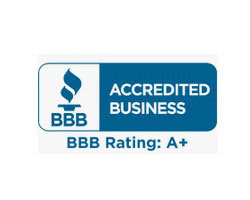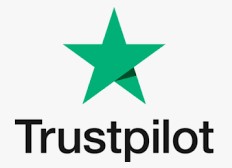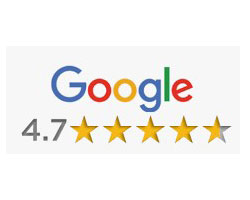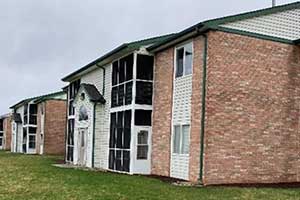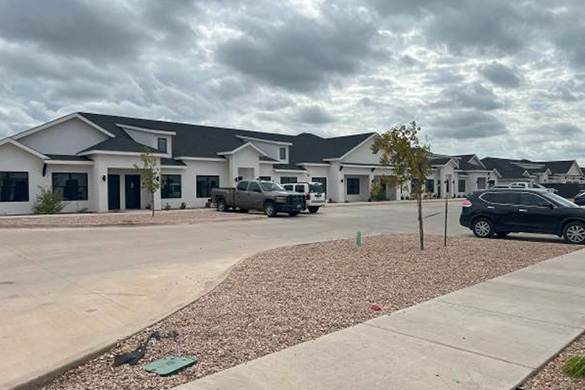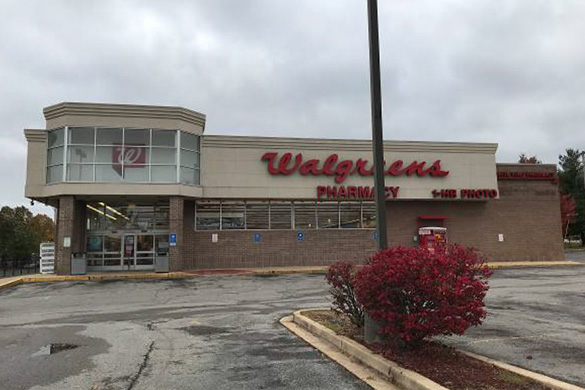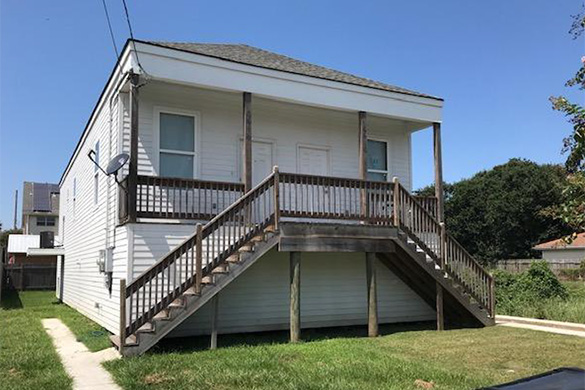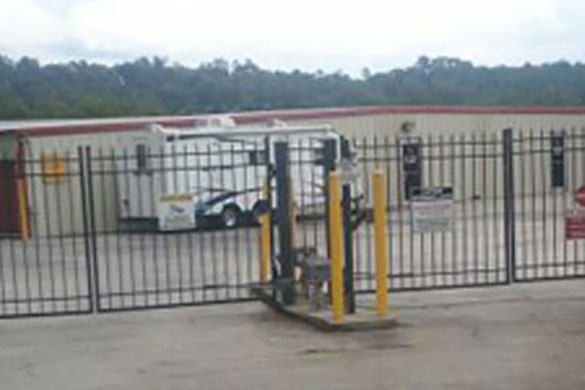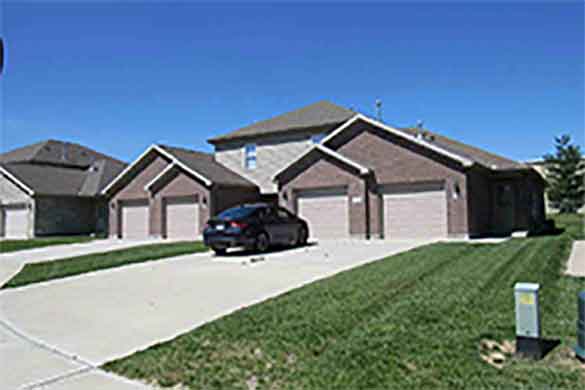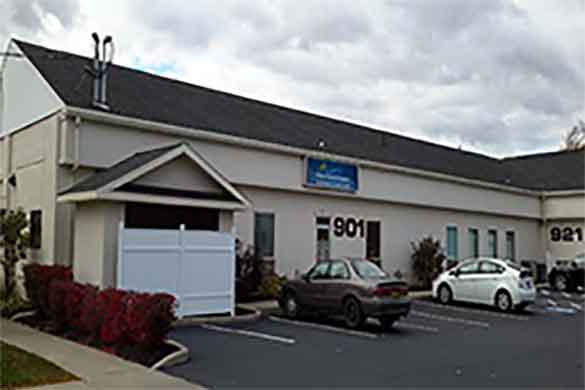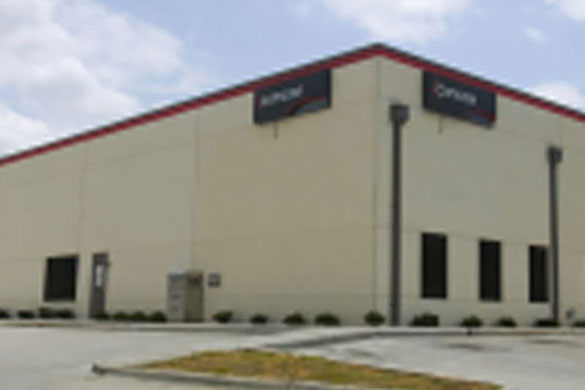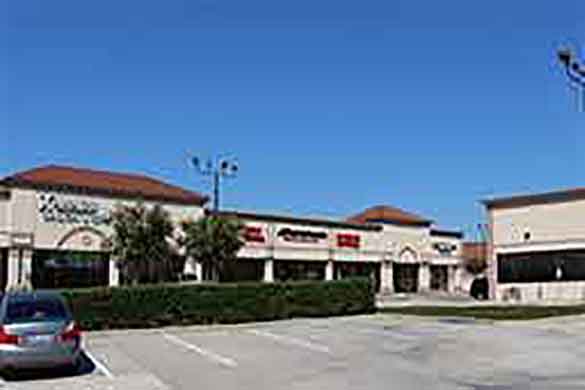Commercial Mortgage Rates
Today's best commercial mortgage rates as of June 1, 2025. Commercial mortgage rates start at 5.42%. These rates are influenced by key benchmarks like the 5-year Treasury at 3.959% and the 10-year Treasury at 4.397%.
Commercial Mortgage Rates as of June 1, 2025
| Loan Type | Rate* | LTV |
|---|---|---|
| Multifamily Loan | 5.42% | Up to 80% |
| Commercial Retail Mortgage | 6.83% | Up to 75% |
| CMBS Loan | 6.43% | Up to 75% |
| NNN Single Tenant | 6.43% | Up to 75% |
| Mobile Home Park | 6.10% | Up to 75% |
| Single Credit Tenant | 6.43% | Up to 75% |
| Owner Occupied | 6.63% | Up to 90% |
| Industrial | 6.83% | Up to 75% |
| Office Building Loan | 6.83% | Up to 75% |
| Self Storage Loan | 6.83% | Up to 75% |
| Medical | 6.83% | Up to 75% |
| SBA 504 | 6.95% | Up to 90% |
| SBA 7(a) | 7.50% | Up to 90% |
| Single Use | 7.50% | Up to 75% |
| Hotel | 7.50% | Up to 75% |
| Motel | 7.50% | Up to 75% |
| Bridge | 9.00% | Up to 80% |
What’s going on with commercial mortgage rates in early 2025?
The Federal Reserve’s Federal Open Markets Committee cut the federal funds rate by 50 basis points at its September 2024, meeting and another 25 basis points each at its November and December 2024 meetings. These were the first rate cuts since March 2020, when the Fed began a long series of rate hikes to curb the high rate of inflation. The Fed’s decisions show that they believe that inflation is under control and moving into the 2% range that the Fed has set as its goal. The Federal Reserve took these actions to prevent further declines in the labor market. In early 2025, the Fed hinted that the pace of further rate cuts would slow in 2025 and hinted that there might be two further cuts this year. These rate cuts, along with potential 2025 rate cuts, may create positive investor demand for commercial real estate, and may provide aid for commercial mortgage customers, as well as consumers in general. We must caution, however, that the Federal Reserve cuts affect short term interest rates directly and long-term rates only indirectly. The Prime Rate, which is a short-term rate, dropped from 8.50% to 7.50% with the Fed’s 2024 actions. However, most commercial mortgage rates are based on the 5-, 7-, or 10-year treasury rates, and not the Prime Rate. We have seen these long-term treasury rates actually rise since the Fed cut short term rates! On September 18th, the 10-year treasury was roughly 3.70%. By the end of January 2025 this rate had jumped to over 4.50%. Investors are still concerned about future inflation and are adopting a wait and see attitude. As of June 1, 2025, the 5 year Treasury is at 3.959% and the 10 year Treasury is at 4.397%.
Everything You Need to Know About Commercial Mortgage Rates in 2025
In order to determine commercial mortgage rates, the first thing a commercial mortgage lender needs to know is the type of property involved. Pricing on apartment loans will be lower than pricing for office properties, as apartments are a preferred investment in today’s market. After the lender understands the asset class involved, he will look at the deal metrics, which include, Loan to Value ratio (LTV), Debt Service Coverage Ratio (DSCR), and Debt Yield. Loans with a lower LTV and higher DSCR are considered less risky and will have better pricing. Another important deciding factor will be the location of the property. Top quality urban and suburban markets will be preferred over rural locations. One other major deciding factor will be the borrower’s experience, credit, net worth and liquidity. Strong borrowers with experience can expect the best pricing. The bottom line is that lenders need to understand the entire picture before quoting rates. As of June 1, 2025, you can check where commercial mortgage rates currently start.
Commercial mortgage rates fluctuate based on current market indices. Most commercial mortgages are priced over one of the following: US Treasury rate, the Wall Street Journal prime rate, or the Secured Overnight Financing Rate (SOFR). At the beginning of 2025, all of these rates are still elevated as a result of the Federal Reserve’s rate increases to curb inflation. As market rates gradually soften, commercial mortgage rates will trend downwards. Many borrowers today are not locking in long term fixed rates but are opting for short term deals with lower prepayment penalties so that they can refinance when rates are more favorable.
It used to be fairly common to obtain 80% financing when rates were in the 3% and 4% range as the property’s cash flow could support higher levels of debt. In early 2025, with many rates in the 6% and 7% range, cash flow is severely restricted due to higher debt service costs. We often see maximum loan to value ratios in the 65% -70% range today as a result of these higher rates. As market rates ease, we would expect to see higher loan to value ratios and lower down payment requirements.
Many borrowers who are looking to refinance loans taken out five to ten years ago are experiencing several obstacles. First, since rates in early 2025 are higher, many loans are coming up cash-short (the new loan amount is not enough to pay off the maturing loan). These borrowers are often required to inject more cash into their deals or take on equity partners who are willing to invest. Today’s higher rates are causing mortgage payments which are often rising faster than the rental income increases will bear. Until rates ease, many borrowers will have experience difficulty refinancing their existing loans.
There are many reasons to work with a qualified and experienced commercial mortgage broker. A mortgage broker will have a large database of capital sources, including agency lenders, insurance companies, CMBS lenders, national, regional and local banks, credit unions, debt funds, and private lenders to choose from. The broker will analyze your specific deal and determine which capital source will offer the best terms and the highest likelihood of success. The broker will professionally package your deal and negotiate the best terms for you.
Select Commercial has over 40 years of experience negotiating commercial and apartment loans for its clients. They have an extensive nationwide network of capital sources that are able to consider most loan scenarios. Many borrowers go to one or two of their local banks but don’t have the nationwide reach to approach other lenders that are often offering better rates and terms. Select Commercial spends the time understanding every client’s needs and will aim to negotiate all important loan terms, including, rate, term, amortization, prepayment penalty, recourse obligations, fees, reporting requirements, etc.
Lenders look at many items when deciding whether to approve an apartment or not. Some of the most important factors include LTV ratio, DSCR ratio, location of the property, property condition, occupancy, and borrower qualifications (experience, credit, net worth, and cash liquidity). While most of these factors are common sense and assumed by borrowers, the DSCR ratio might need some explanation. DSCR stands for Debt Service Coverage Ratio and is a ratio of the total net operating income divided by the annual debt service. Most lenders will require a DSCR of at least 1.25. This means that for every dollar of mortgage payment the property must net $1.25 in NOI. The reason that this is important is that while the maximum LTV might be 80%, the property needs to meet the debt service requirements. Due to higher market rates in 2025, most properties will only cash flow at 65% or 70%. It is important to calculate both LTV and DSCR when looking for a new loan.
Lenders look for quality properties with high historical occupancy in excellent neighborhoods. Certain asset classes are preferred today based on current market conditions. Apartment properties and investment grade retail/warehouse/industrial properties with long leases are always in high demand. The risk of default with these properties is very low. Riskier deals include properties with short term leases, properties with high vacancy rates, and properties in remote or rural locations. Certain asset classes are not in favor today, such as general office properties. Ever since the work from home policies enacted during the Covid pandemic (many of which still remain in place) office properties have lagged the market.
Most new loans today will have rates that are higher than the rates which borrowers obtained 5 – 10 years ago. As these loans come up for renewal, many borrowers will be forced to refinance at today’s higher rates. Those borrowers might find that the new loan does not cash flow as well as their previous loan and might need to pay down the loan. Some borrowers who opt to refinance now might be looking to free up cash for other investments. Borrowers will need to decide if that makes sense in today’s market. We are not seeing a lot of discretionary refinancing right now due to higher market rates. Once rates soften, we expect to see a significant increase in discretionary refinancing.
Applying for a HUD multifamily loan is no different than applying for a regular loan with your bank. The lender will want to see a current rent roll showing at least 90% occupancy, a 12-month operating history showing the necessary cash flow to support the new loan, sufficient multifamily experience, good net worth and cash liquidity, and a good credit rating. Loans that do not meet HUD, Fannie Mae or Freddie Mac standards might still qualify for a bank or credit union loan. The lender will tell you upfront which lending options are best for you.
Applying for a Freddie Mac multifamily loan is no different than applying for a regular loan with your bank. The lender will want to see a current rent roll showing at least 90% occupancy, a 12-month operating history showing the necessary cash flow to support the new loan, sufficient multifamily experience, good net worth and cash liquidity, and a good credit rating. Loans that do not meet HUD, Fannie Mae or Freddie Mac standards might still qualify for a bank or credit union loan. The lender will tell you upfront which lending options are best for you.
Applying for a Fannie Mae multifamily loan is no different than applying for a regular loan with your bank. The lender will want to see a current rent roll showing at least 90% occupancy, a 12-month operating history showing the necessary cash flow to support the new loan, sufficient multifamily experience, good net worth and cash liquidity, and a good credit rating. Loans that do not meet HUD, Fannie Mae or Freddie Mac standards might still qualify for a bank or credit union loan. The lender will tell you upfront which lending options are best for you.
Most commercial mortgage loans today are fixed for 5, 7, or 10 years and come with a 25–30 year amortization schedule. Loans can be recourse (personal guarantee) or non-recourse (no personal guarantee). Commercial mortgage loans typically carry prepayment penalties, whereas residential home loans usually do not. Specific terms will be determined by your lender’s underwriting team after your application is reviewed.
Commercial mortgage lenders typically lend up to 75–80% on an apartment purchase (down payment of 20–25% necessary). On other types of commercial property, commercial mortgage lenders will typically lend up to 70–75% (down payment of 25–30% necessary). An exception is for owner-occupied business real estate, where owner/users may qualify for up to 90% LTV financing.
Commercial mortgage loans are evaluated differently from residential loans. Residential lenders base their decisions on the borrower’s income and creditworthiness, while commercial lenders focus on the property’s cash flow, operating statements, rent roll, and other financial metrics. Riskier commercial properties often lead to higher rates, while strong-performing properties can result in rates lower than residential loans.
The best commercial properties to invest in 2025 are those with high historical occupancy in strong locations. Apartment properties and investment-grade retail, warehouse, and industrial properties with long leases are preferred due to their low risk. Riskier properties include those with short-term leases, high vacancy rates, or located in rural areas. General office properties remain less desirable due to work-from-home trends.
Refinancing a commercial mortgage involves determining whether the new loan meets your goals, such as lowering rates, reducing payments, or freeing up cash. Higher rates in 2025 can make refinancing challenging, with some borrowers needing to inject cash into deals. Once rates soften, refinancing may become more favorable for many property owners.
To apply for a commercial mortgage, you’ll need to provide financial documentation, including a rent roll, operating statements, and borrower financials (net worth, liquidity, credit score). The lender evaluates both the property’s and borrower’s profiles to determine loan eligibility and pricing. A qualified mortgage broker can help streamline the process and identify the best options for you.
Commercial Mortgage Benefits
Commercial mortgage rates start as low as 5.42% (as of June 1st, 2025)
• A commercial mortgage broker with over 30 years of lending experience
• No upfront application or processing fees
• Simplified application process
• Up to 80% LTV on multifamily, 75% on commercial (90% with SBA)
• Terms and amortizations up to 30 years
• Loans for purchase and refinance, including cash-out
• 24 hour written pre-approvals with no cost and no obligation
Our Reviews
Recent Closings
Multifamily Loan Rates - Detailed
For the most accurate and up-to-date information on multifamily rates, rental market trends, and investment opportunities, select your state from the dropdown menu below:
Multifamily Rates Updated June 1st, 2025
| Multifamily Loan Rates Over $6,000,000 | Rate* | Amortization | |
|---|---|---|---|
| 5 Year Fixed | 5.42% | Up to 30 years | |
| 7 Year Fixed | 5.56% | Up to 30 years | |
| 10 Year Fixed | 5.64% | Up to 30 years |
- Tier 2 - 75-80%/1.25x
- Tier 3 - 65%/1.35x
- Tier 4 – 55%/1.55x
| Multifamily Loan Rates Under $6,000,000 | Rates* | Amortization | |
|---|---|---|---|
| 5 Year Fixed | 5.88% | Up to 30 years | |
| 7 Year Fixed | 6.02% | Up to 30 years | |
| 10 Year Fixed | 6.10% | Up to 30 years |
- Tier 2 - 75-80%/1.25x
- Tier 3 - 65%/1.35x
- Tier 4 – 55%/1.55x
Commercial Mortgage Rates - Detailed
For the most accurate and up-to-date information on rates, rental market trends, and investment opportunities, select your state from the dropdown menu below:
Commercial Mortgage Rates Updated June 1st, 2025
| Loan Product | Rate* | Amortization |
|---|---|---|
| 3 Year Fixed | 6.33% | Up to 25 years |
| 5 Year Fixed | 6.44% | Up to 25 years |
| 7 Year Fixed | 6.62% | Up to 25 years |
| 10 Year Fixed | 6.83% | Up to 25 years |
CMBS Rates - Detailed
Updated June 1st, 2025
| Loan Product | Rate* | Amortization |
|---|---|---|
| 10 Year Fixed | 6.43%-7.18% | Up to 30 years |
NNN Lease - Detailed
Updated June 1st, 2025
| Loan Product | Rate* | Amortization |
|---|---|---|
| 3 Year Fixed | 5.93% | Up to 30 years |
| 5 Year Fixed | 6.04% | Up to 30 years |
| 7 Year Fixed | 6.22% | Up to 30 years |
| 10 Year Fixed | 6.43% | Up to 30 years |
Fannie Mae Small Balance Apartment - Detailed
Updated June 1st, 2025
| Loan Product | Rate* | Amortization |
|---|---|---|
| 5 Year Fixed | 5.88%-6.70% | Up to 30 years |
| 7 Year Fixed | 6.02%-6.80% | Up to 30 years |
| 10 Year Fixed | 6.10%-6.91% | Up to 30 years |
| 15 Year Fixed | 6.25%-7.17% | 30 years |
| 30 Year Fixed | 6.20%-7.09% | 30 years |
- Tier 2 - 75-80%/1.25x
- Tier 3 - 65%/1.35x
- Tier 4 – 55%/1.55x
Fannie Mae Large Balance Apartment - Detailed
Updated June 1st, 2025
| Loan Product | Rate* | Amortization |
|---|---|---|
| 5 Year Fixed | 5.42%-6.27% | Up to 30 years |
| 7 Year Fixed | 5.56%-6.34% | Up to 30 years |
| 10 Year Fixed | 5.64%-6.42% | Up to 30 years |
| 15 Year Fixed | 5.85%-6.59% | 30 years |
| 30 Year Fixed | 5.80%-6.75% | 30 years |
- Tier 2 - 75-80%/1.25x
- Tier 3 - 65%/1.35x
- Tier 4 – 55%/1.55x
Freddie Mac Small Balance Apartment - Detailed
Updated June 1st, 2025
| Loan Product | Rate* | Amortization |
|---|---|---|
| 5 Year Fixed | 6.17% | Up to 30 years |
| 7 Year Fixed | 6.16% | Up to 30 years |
| 10 Year Fixed | 6.08% | Up to 30 years |
- Tier 2 - 75-80%/1.25x
- Tier 3 - 65%/1.35x
- Tier 4 – 55%/1.55x
Bank Apartment Mortgage - Detailed
Updated June 1st, 2025
| Loan Product | Rate* | Amortization |
|---|---|---|
| 5 Year Fixed | 6.25%-6.75% | Up to 30 years |
| 7 Year Fixed | 6.25%-6.75% | Up to 30 years |
| 10 Year Fixed | 6.50%-6.99% | Up to 30 years |
- Tiered pricing from 55% – 80% LTV
- Simplified underwriting for small balance loans
- Loan amounts from $1,500,000 - $10,000,000+ Nationwide
- Loan to value ratios up to 80% on purchases and 75% on refinances
- Cash out refinances are acceptable
- Pricing based on loan-to-value and debt service coverage ratio:
- Tier 2 - 75-80%/1.25x
- Tier 3 - 65%/1.35x
- Tier 4 – 55%/1.55x
- Interest only loans are available
- Step down and yield maintenance prepayment penalties
- Nonrecourse loans are available
CMBS Multifamily - Detailed
Updated June 1st, 2025
| Loan Product | Rate* | Amortization |
|---|---|---|
| 10 Year Fixed | 6.43%-7.18% | Up to 30 years |
- Up to 75% LTV
- Loan amounts from $2 million and up
- Loans available for apartment buildings, retail shopping centers, office buildings, warehouses and hospitality
- Loan to value ratios up to 75% on purchases and refinances
- Cash out refinances are acceptable
- Interest only loans are available
- Loans are non-recourse
Multifamily Bridge
Call for more information
Owner Occupied Commercial Mortgage Rates - Detailed
Updated June 1st, 2025
| Loan Product | Rate* | Amortization |
|---|---|---|
| 3 Year Fixed | 6.13% | Up to 30 years |
| 5 Year Fixed | 6.24% | Up to 30 years |
| 7 Year Fixed | 6.42% | Up to 30 years |
| 10 Year Fixed | 6.63% | Up to 30 years |
Small Business Administration (SBA) - Detailed
Updated June 1st, 2025
| Loan Product | Rate* | Amortization |
|---|---|---|
| Adjustable | 7.50%-9.50% | Up to 25 years |
| 5 Year Fixed | 7.50%-9.50% | Up to 25 years |

